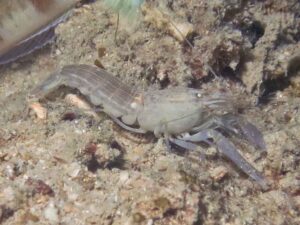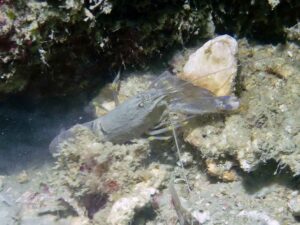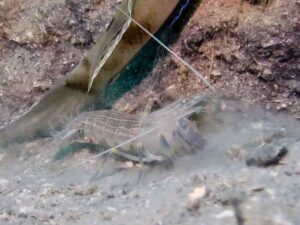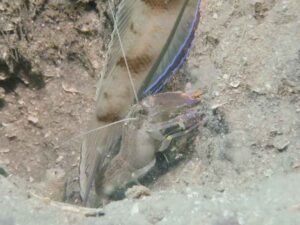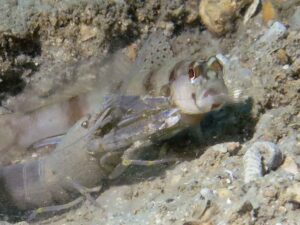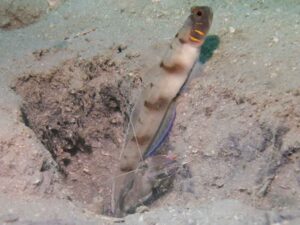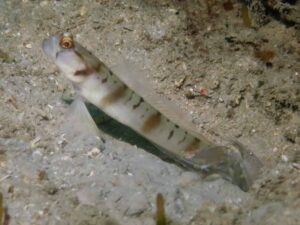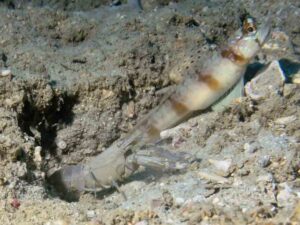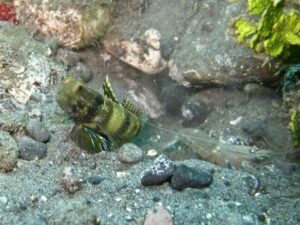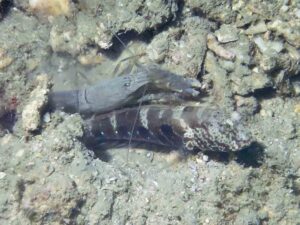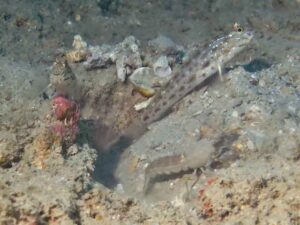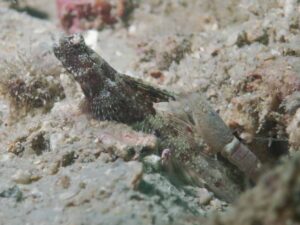Grey Snapping Shrimp
Alpheus species 5
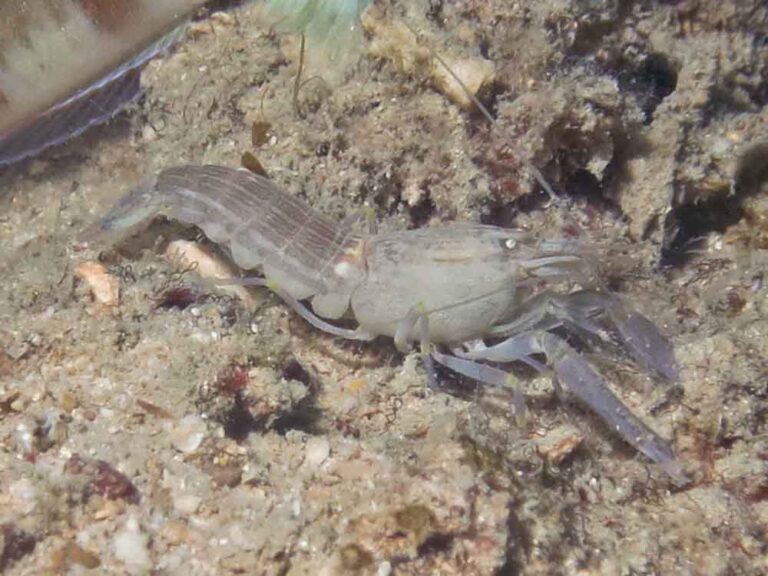
Grey Snapping Shrimp
Alpheus species 5
undescribed
Description
Carapace: The carapace is blue-grey, plain on the sides and longitudinally striped on the dorsum. The stripes are continuous with those on the abdomen.
The abdomen is grey with longitudinal brown stripes dorsally. Laterally it is uniformly pale grey with a single brown line running through all segments. The last segment and tail have setae.
The rostrum is grey and the antennae are white.
The pincers are grey-violet with white or orange dactyl and pollex.
The chelate second leg is violet with yellow joints.
The legs are violet-grey with pale yellow joints.
Identifying Features
Similar Shrimps
The Violet Shrimp is found in a similar habitat. It can have a striped abdomen but is coloured violet or pinkish-orange and has violet antennae.
Blue Nipper Shrimp occupies a similar habitat but is much larger. Legs are similar, with a blue wash to chelipeds and thoracic appendages. Carapace and abdominal markings are distinctively different.
Nomenclature
Hayashi & Shiratori 2003 Alpheus species 6 from Japan
Undescribed species
Ecology
HABITAT
Preferred substrate
Fine silt mixed with coarse sand, shell fragments, pebbles and small rocks.
Depth range from 5 to 20 metres, usually at the deeper end of the range.
Proximity to reef
Burrows are constructed near the base of the reef provided that the substrate is silty. Inner lagoon reefs and sheltered sites. Also on flat silty seabed up to 2 km from the shore (Hervey Bay, Frazer Island).
NATURAL HISTORY
This shrimp seems to have a particular affinity for very fine silt making them extremely difficult to photograph as they are always in a cloud of silt.
Distribution
Published distribution: From Japan, Hayashi & Shiratori (2003) Alpheus species 6. with the Ventral-barred Shrimpgoby, Cryptocentrus sericus.
We have seen a photograph from Indonesia in association with Amblyeleotris callopareia (Allen & Erdmann 2015).
Our records:
Australia; Frazer Island, Fitzroy Island, Low Isles.
Solomon Islands; Santa Isabel Island.
Indonesia; Batanta Island.
Associated Goby species
Associated Shrimpgobies (eight species)
Amblyeleotris callopareia, Beautiful-cheek Shrimpgoby
Amblyeleotris gymnocephala, Mask Shrimpgoby
Amblyeleotris macronema, Longspine Shrimpgoby
Amblyeleotris stenotaeniata, Thinbar Shrimpgoby
Cryptocentrus sericus, Ventral-barred Shrimpgoby
Cryptocentrus strigilliceps, Target Shrimpgoby
Ctenogobiops crocineus, Silverspot Shrimpgoby
Tomiyamichthys nudus, Scaleless Shrimpgoby

